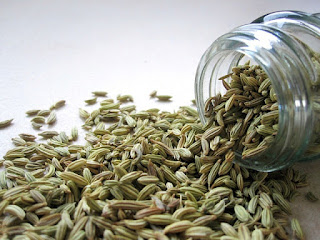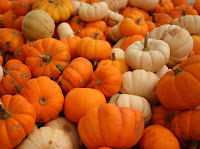Mama Kat Thursday: The Fennel Seed Caper
Today's Mama Kat topic is to share, "A Mistake I Made in the Kitchen."
 I had to ask Hubby to help me remember a cooking mistake. I actually haven't made that many. He recalled a mistake I'll call the "The Fennel Seed Caper."
I had to ask Hubby to help me remember a cooking mistake. I actually haven't made that many. He recalled a mistake I'll call the "The Fennel Seed Caper."
It was 1983, the first year of our marriage. We were living in Maryland in our first apartment. Hubby was still in the Air Force.
One of our wedding gifts had been a nice wood spice rack that included a dozen bottles of various spices. Most of them were common ones like Basil, Oregano, Celery Seed, Thyme and so on, that I knew what to do with. But there was one I had no idea what to do with: Fennel seed.
I wanted to try using it, so one day, I searched my Joy of Cooking cookbook to see if I could find a recipe that called for Fennel seed..
I found just one. It was called "Romanian Noodle & Pork Casserole."
It called for 1/2 to 1 teaspoon of Fennel seed.
So I made it.
It was the worst tasting thing either of us ever tried. I threw it out and we went out to a fast food restaurant for dinner.
I also tossed the Fennel seed.
*****
About Fennel Seeds:
I read online that whole Fennel seeds need to be "cracked" before being used in a recipe to release it's fragrant oils---something the recipe never mentioned. It comes in whole seed or ground forms and it's most common uses are teas, dry rubs and Indian cooking.
******
I wanted to try using it, so one day, I searched my Joy of Cooking cookbook to see if I could find a recipe that called for Fennel seed..
I found just one. It was called "Romanian Noodle & Pork Casserole."
It called for 1/2 to 1 teaspoon of Fennel seed.
So I made it.
It was the worst tasting thing either of us ever tried. I threw it out and we went out to a fast food restaurant for dinner.
I also tossed the Fennel seed.
*****
About Fennel Seeds:
I read online that whole Fennel seeds need to be "cracked" before being used in a recipe to release it's fragrant oils---something the recipe never mentioned. It comes in whole seed or ground forms and it's most common uses are teas, dry rubs and Indian cooking.
******






Comments
Post a Comment
Thanks for leaving a comment!